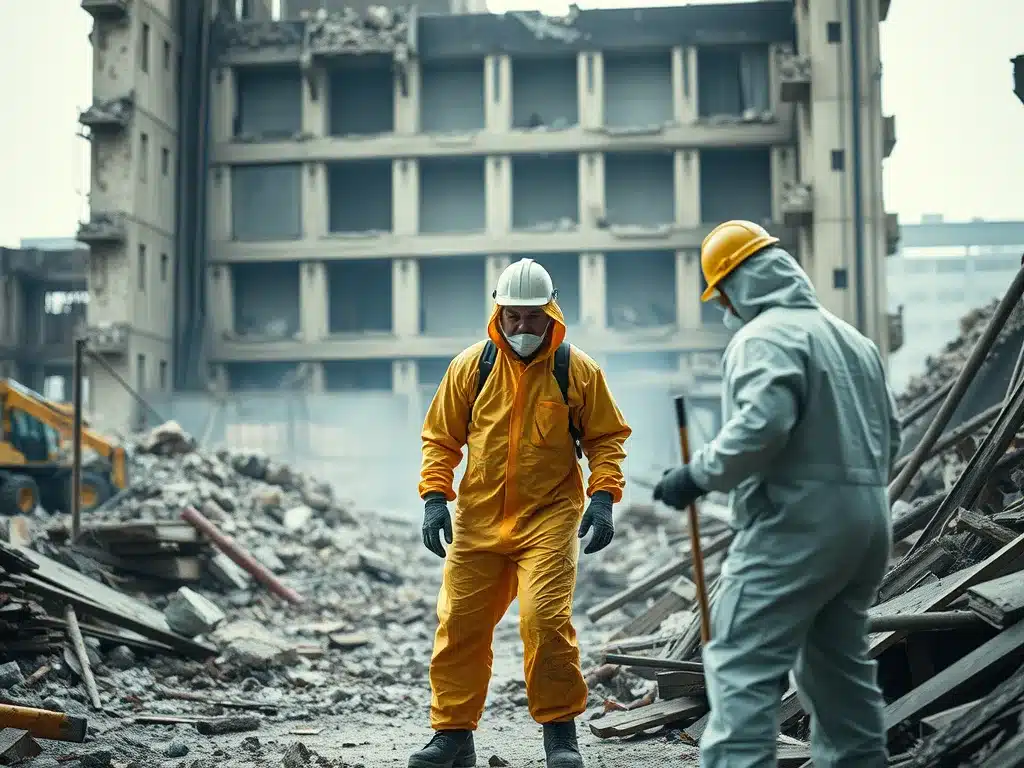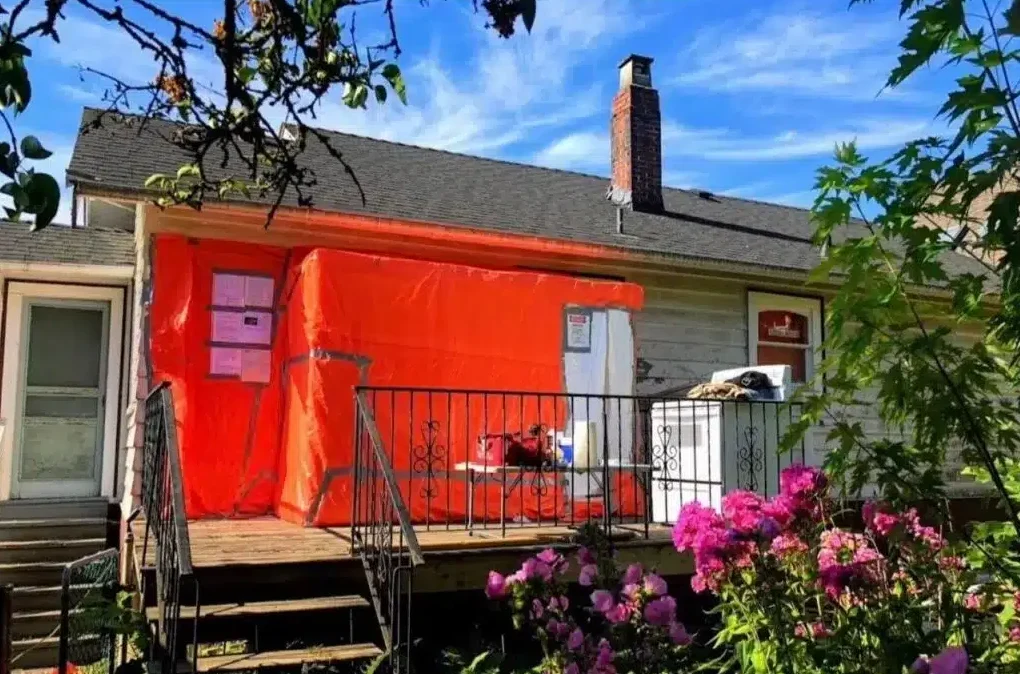Understanding Asbestos and Its Risks
Asbestos is a naturally occurring mineral that possesses unique properties, making it a popular choice in the construction industry for several decades. Its remarkable resistance to heat, electrical conductivity, and tensile strength have resulted in its extensive use in building materials such as insulation, roofing tiles, cement products, and flooring. However, the very characteristics that contributed to its widespread use also render it a serious health hazard when disturbed during demolition or renovation activities.
It is crucial to understand that asbestos is not harmful in its solid state; however, once it becomes airborne through demolition or renovation processes, it poses significant risks. The tiny, fibrous particles can be inhaled, leading to serious health complications. Prolonged exposure has been linked to a variety of diseases, including asbestosis, lung cancer, and mesothelioma, a rare and aggressive cancer affecting the lining of the lungs and abdomen. Symptoms related to asbestos exposure may not surface until years later, making it essential for individuals involved in demolition and renovation projects to recognize potential asbestos-containing materials.
During construction and renovation, activities such as cutting, sanding, or breaking down materials can release asbestos fibers into the air, which can then be inhaled by workers or occupants in the vicinity. Therefore, understanding the locations where asbestos may be present, such as in older buildings constructed before the 1980s, is critical for ensuring safety. Proper identification and testing of materials suspected of containing asbestos must be conducted before any demolition or renovation begins. It is also advisable to enlist the help of certified professionals who specialize in asbestos removal to mitigate risks effectively.
Identifying Asbestos in Your Home or Building
Asbestos is a naturally occurring mineral that was widely used in construction materials due to its durability and resistance to heat. However, the health risks associated with asbestos exposure have made its presence a significant concern during demolition and renovation projects. Identifying potential asbestos-containing materials (ACMs) in your home or building is essential for ensuring the safety of both occupants and workers involved in construction activities.
Common materials that may contain asbestos include old insulation, particularly those dating back to the 1980s and earlier. Pipe insulation and boiler insulation are frequent culprits. Additionally, asbestos can be found in flooring materials such as vinyl tiles and linoleum, as well as the backing of carpeting. Roofing materials, including shingles and felt paper, may also harbor asbestos fibers. If your building has access to these older materials, a careful inspection is warranted.
It is crucial to recognize that visual inspection alone cannot determine the presence of asbestos. Attempting to identify asbestos without proper training poses significant health risks, as disturbing these materials can release harmful fibers into the air. Therefore, hiring a professional for testing and inspection is highly recommended. Certified asbestos inspectors use specialized equipment and techniques to accurately assess materials and determine the presence of asbestos fiber.
Moreover, deteriorating materials can heighten the risk of asbestos exposure. Crack or crumbling insulation, damaged flooring, and aging roofing are red flags that indicate the potential release of asbestos fibers. If such signs are observed, it is imperative to take immediate action by consulting with a licensed asbestos removal expert. Proper identification and management of ACMs are vital steps in safeguarding health prior to any renovation or demolition efforts.
The Asbestos Removal Process
The process of asbestos removal during demolition and renovation projects is a critical task that necessitates strict adherence to legal requirements and safety guidelines. Asbestos, a hazardous material previously utilized in construction, requires specialized handling and removal to protect both workers and residents. To begin with, it is essential for property owners and contractors to obtain the necessary permits prior to the initiation of any removal work. Engaging with local authorities ensures compliance with regulations, which typically involve notifications of intent to remove asbestos from a building.
Once permits are secured, a qualified professional will conduct a thorough assessment of the area to identify and quantify asbestos-containing materials (ACMs). This evaluation is vital to develop a comprehensive plan for safe removal. The removal process commences by establishing a containment zone around the worksite to prevent the accidental release of asbestos fibers into the air. Proper isolation involves sealing off the area with plastic sheeting and employing negative air pressure techniques to ensure that any airborne particles are captured and filtered through specialized equipment.
The safety of workers and residents is paramount during the removal process. Workers are required to wear appropriate personal protective equipment (PPE), which includes respirators, disposable coveralls, gloves, and eye protection. These protective measures significantly reduce the risk of exposure to dangerous asbestos fibers. Furthermore, professionals follow strict safety protocols, including wetting down materials to minimize dust generation, routine air monitoring to detect potential asbestos fibers in the atmosphere, and proper disposal methods compliant with environmental regulations.
Once the removal of asbestos and contaminated materials is complete, a thorough cleanup and decontamination of the area is performed to ensure that no residual hazards remain. Only after rigorous clearance tests confirm the absence of asbestos fibers can the construction, demolition, or renovation work safely proceed. Adhering to these steps is crucial in safeguarding public health throughout the asbestos removal process.
Planning for Demolition and Renovation After Asbestos Removal
Once asbestos removal has been successfully completed, careful planning is essential for the subsequent phases of demolition and renovation. This phase not only involves the immediate next steps but also includes a comprehensive evaluation of how the site can be effectively transformed. It is crucial to develop a robust plan that encompasses safety measures, structural assessments, and the appropriate handling of materials removed during the asbestos abatement process.
During the planning phase, the construction team should conduct a thorough inspection of the site to ensure that it is safe for demolition and renovation activities to take place. This involves evaluating the structural integrity of the building and any potential hazards that may arise during construction. In addition, specific regulations regarding construction practices following asbestos abatement need to be adhered to, ensuring compliance with local health and safety guidelines.
Another key consideration involves the disposal of materials removed during the asbestos removal. Proper protocols must be followed for the transportation and disposal of hazardous waste to prevent any contamination. Furthermore, utilizing licensed contractors who are familiar with the regulations regarding asbestos and its removal can significantly reduce risks associated with non-compliance. These professionals bring not only expertise in safety practices but also knowledge in efficient demolition and renovation techniques that can enhance the rebuilding process.
Emphasizing modernization, renovations post-asbestos removal allow for improvements in energy efficiency and overall functionality of the space. Homeowners can take this opportunity to upgrade systems, enhance aesthetic appeal, and ensure a healthier environment. Overall, meticulous planning post-asbestos removal can lead to a successful transformation, ensuring safety and compliance while maximizing the potential of the newly renovated space.



